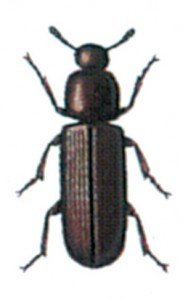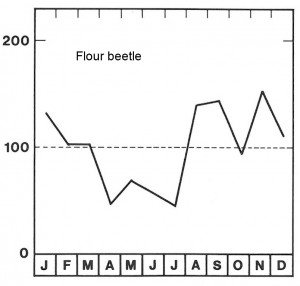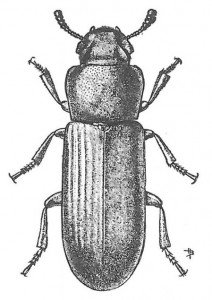

Latin: Tribolium confusum.
3-4 mm long beetles ranging in colour from light reddish brown to dark brown. The confused flour beetle and its larvae look like small versions of the dark flour beetle and its larvae. It can damage grain and feed storages, but can also be found in grocery warehouses and in private households.
The confused flour beetles do not only eat cereals but can also infest dried fruit, spices and chocolate. Infested flour quickly becomes warm, gets a greyish colour and moulds easily. Heavily infested items get such an unpleasant odour and taste that they are unsuitable for human consumption. The beetles need temperatures between 18 and 21 ° C to be able to reproduce, and they thrive only at places where it is warm. A female confused flour beetle can lay about one thousand eggs and 3-5 generations develop per year, depending on the temperature.

The monthly reproduction speed rate is about 50 times at temperatures of 30-33 ° C, where development is quick. Confused flour beetles can live in fairly dry materials. The fact that confused flour beetles can survive on a various diets, have a high reproductive and their ability to find their way into even tightly sealed goods make them annoying and difficult to exterminate.
The confused flour beetle is exterminated the same way as the dark flour beetle.




